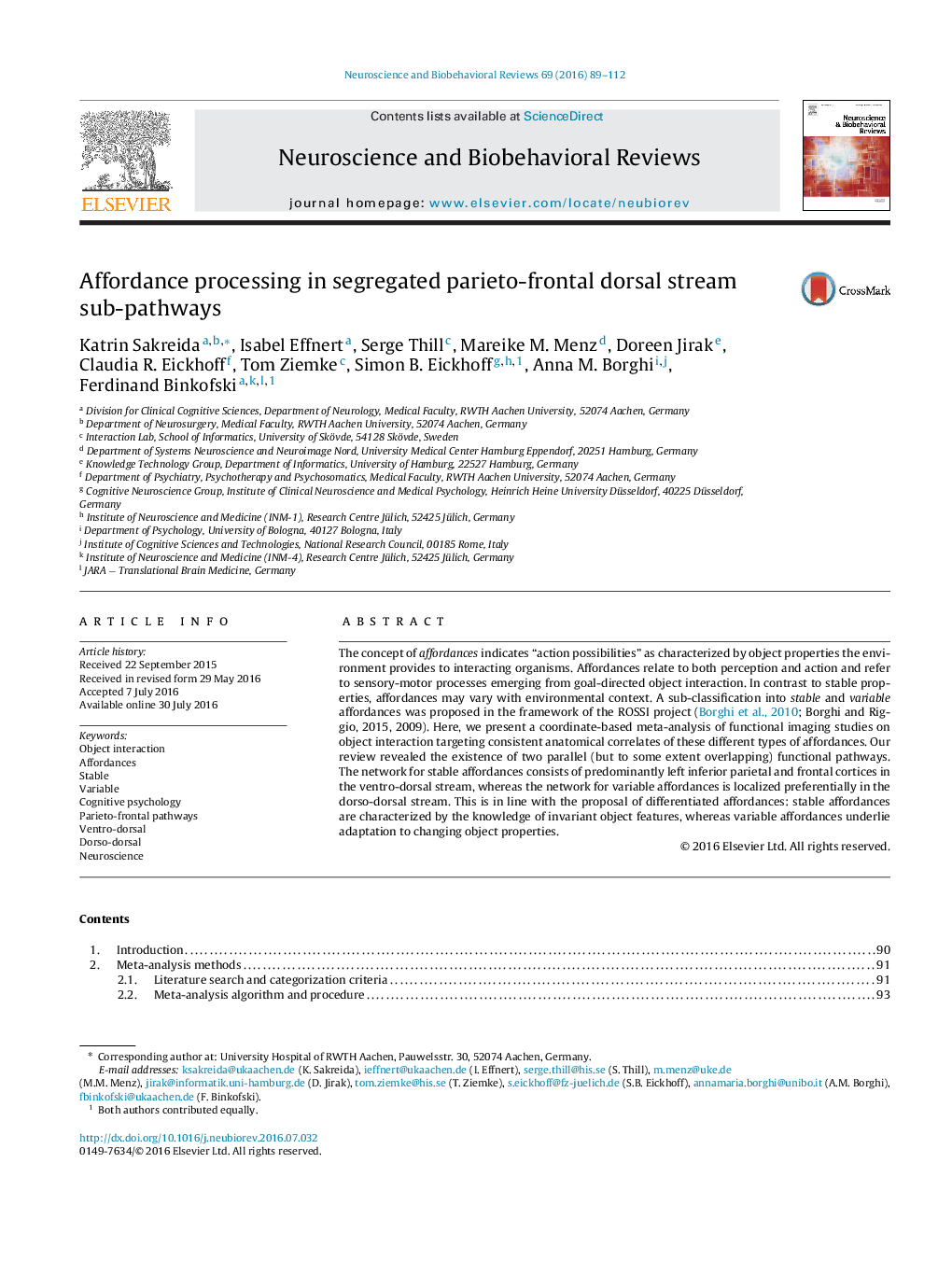| Article ID | Journal | Published Year | Pages | File Type |
|---|---|---|---|---|
| 7302735 | Neuroscience & Biobehavioral Reviews | 2016 | 24 Pages |
Abstract
The concept of affordances indicates “action possibilities” as characterized by object properties the environment provides to interacting organisms. Affordances relate to both perception and action and refer to sensory-motor processes emerging from goal-directed object interaction. In contrast to stable properties, affordances may vary with environmental context. A sub-classification into stable and variable affordances was proposed in the framework of the ROSSI project (Borghi et al., 2010; Borghi and Riggio, 2015, 2009). Here, we present a coordinate-based meta-analysis of functional imaging studies on object interaction targeting consistent anatomical correlates of these different types of affordances. Our review revealed the existence of two parallel (but to some extent overlapping) functional pathways. The network for stable affordances consists of predominantly left inferior parietal and frontal cortices in the ventro-dorsal stream, whereas the network for variable affordances is localized preferentially in the dorso-dorsal stream. This is in line with the proposal of differentiated affordances: stable affordances are characterized by the knowledge of invariant object features, whereas variable affordances underlie adaptation to changing object properties.
Related Topics
Life Sciences
Neuroscience
Behavioral Neuroscience
Authors
Katrin Sakreida, Isabel Effnert, Serge Thill, Mareike M. Menz, Doreen Jirak, Claudia R. Eickhoff, Tom Ziemke, Simon B. Eickhoff, Anna M. Borghi, Ferdinand Binkofski,
